The Tsho Rolpa Trek is a little different than the other treks I’ve done in Nepal. The area is highly under-touristed which means that there aren’t a ton of places to buy things along the way. In places like the Everest Region or Annapurna Region, it’s easy to grab whatever you forgot as you go. On the Tsho Rolpa trek, that’s not the case, so it’s important to pack carefully. One major thing I noticed is that there are almost no snack shops and very few tea shops on route. So bringing good snacks is crucial. Here’s my Tsho Rolpa Trek packing list…
Note: We went in May when the weather was fairly warm. Those going in October or November should pack heavier layers.
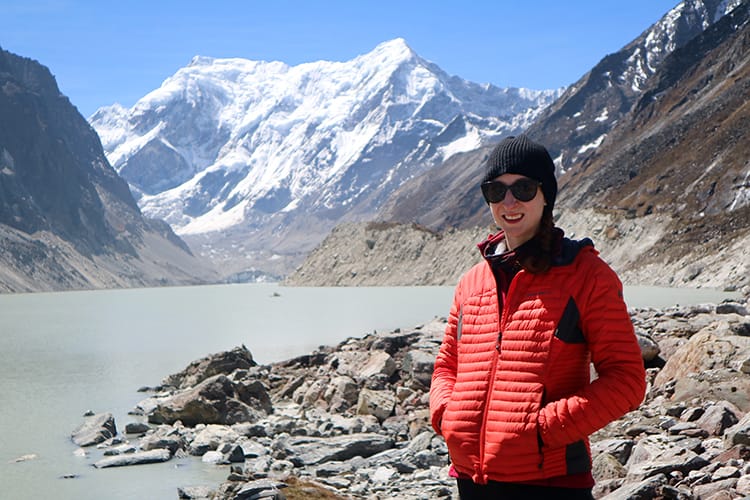
Backpack & Storage
40L Backpack
I I have the 40L Alchemist Bag from Eddie Bauer. It’s water resistant, has a tough outer shell that doesn’t rip easily, and is big enough to hold everything I need for a 4-12 day trek. I don’t recommend taking a bag over 55L because typically when you have more room, you fill it up with unnecessary stuff.
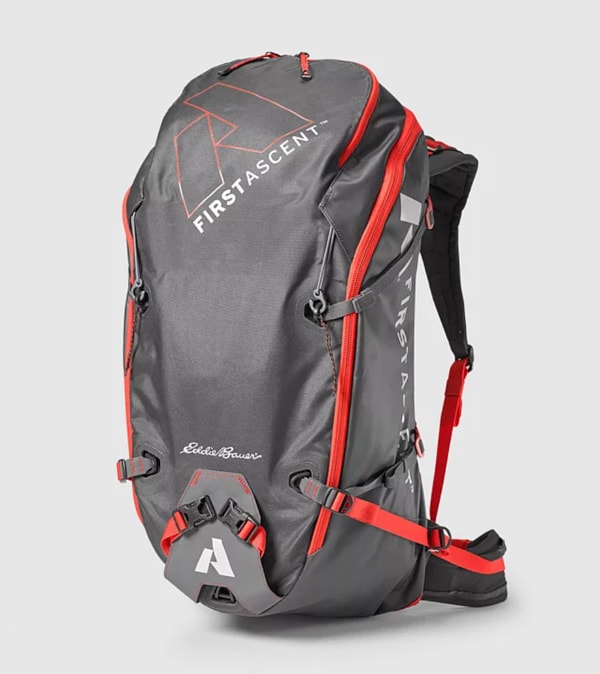
Mudder Waterproof Bags
I always carry a few waterproof bags with me to keep my electronics in. That way if it starts to rain, I don’t have to worry too much. These are a life saver especially in May when we got hit with rain at 2pm every single day.
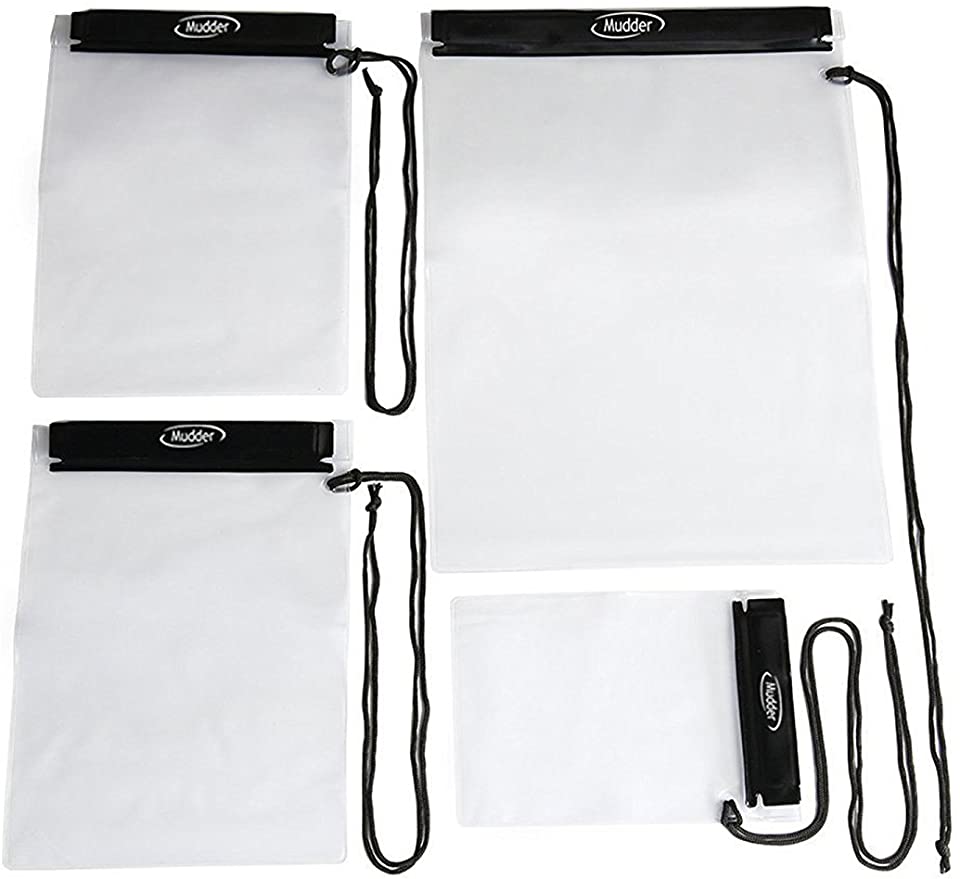
Packing Cubes
Packing cubes keep my bag super organized. I can take everything out in seconds and find what I want without making a mess. My boyfriend’s bag is always a mess so I’ll be getting him a set when I’m back in the states.
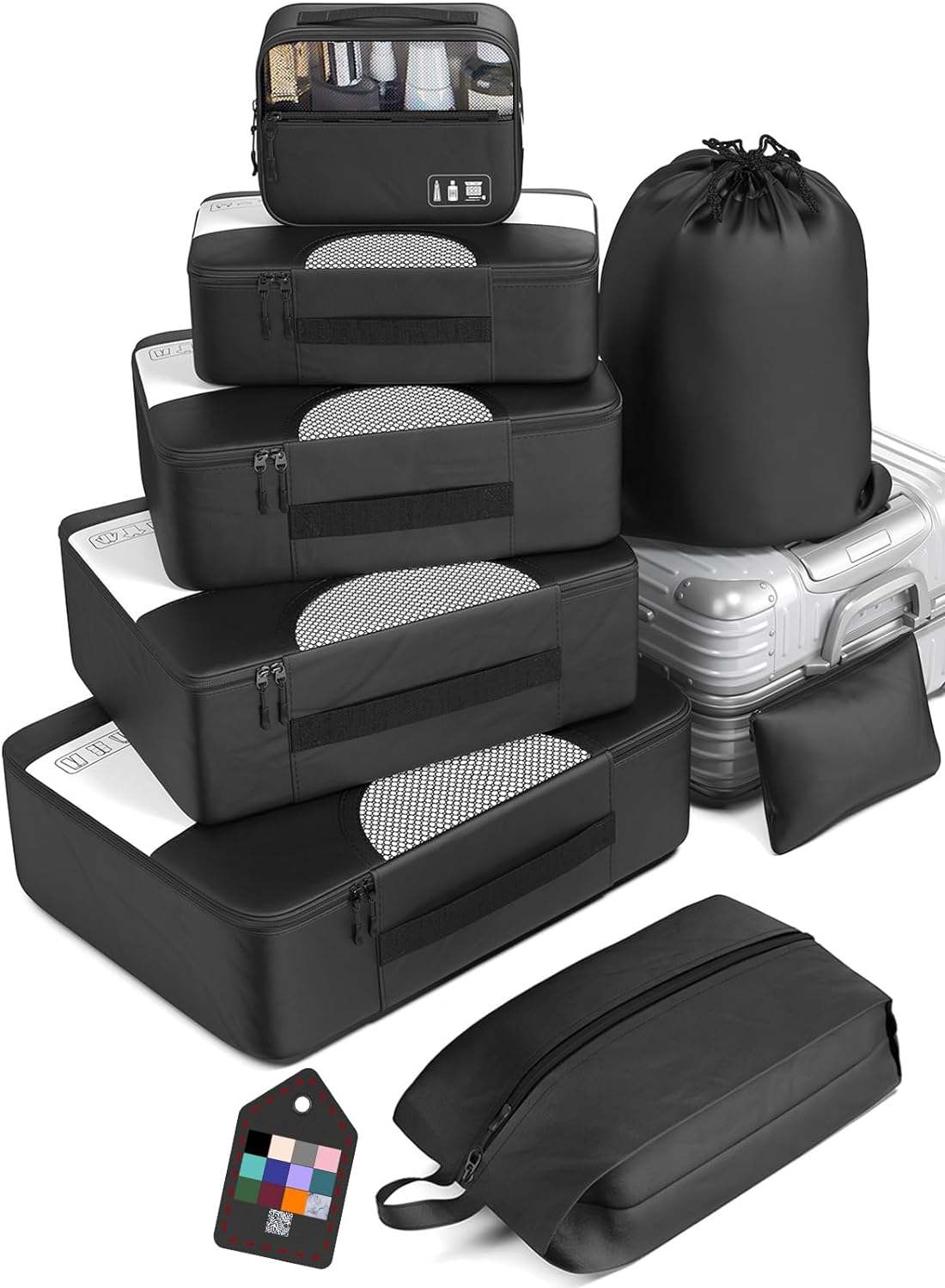
Water Bottle
Please avoid using plastic on the trails. It’s much cheaper to bring your own water bottle and refill it. If you want, buy one water bottle at the beginning of the trek and then reuse it as you go.

Backpack Rain Cover
This is a must if your backpack isn’t waterproof. Many backpacks are water resistant but won’t stay dry in a downpour.
Ziplock Bags
Never underestimate the usefulness of ziplock bags. They’re great for keeping things organized. I put medicine in the small ones to avoid carrying bottles. I use one for snacks and some for toiletries. I always have a few of each size.
Plastic Bag for Laundry
Always have a plastic grocery bag with you to throw your dirty laundry in. I use it just for socks and underwear. I also like to throw a dryer sheet in with it to keep my bag smelling good.
Clothing & Accessories
We both packed super light for this trip because it was only 7 days of hiking. We went in the summer so it wasn’t that cold which allowed us to forego a lot of layers. If you go in the winter, I recommend a set of thermals too.
I recommend Eddie Bauer products because that’s what I wear. To be honest, I couldn’t afford expensive brands when I started out. Eddie Bauer has great sales. At least once a month everything is 40-50% off on their website. I only buy things when they’re on sale. I found that the items are a high quality even though they are much cheaper than brands like North Face and Colombia.
Down Coat
I’m obsessed with my Eddie Bauer Microtherm coat. It’s super warm and folds up tiny in my bag. It also weighs very little making it easy to carry on treks.
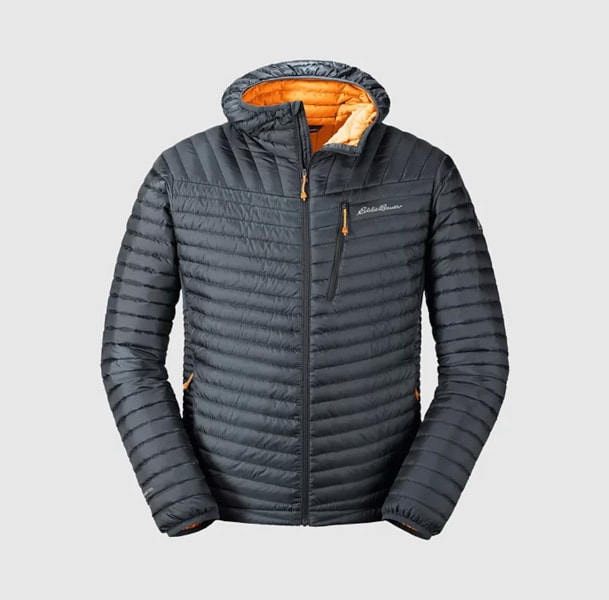
Fleece Jacket
Pretty much every time we stopped for lunch or tea, I put my fleece on to keep warm. I also wear it to bed on nights when it’s a little colder.
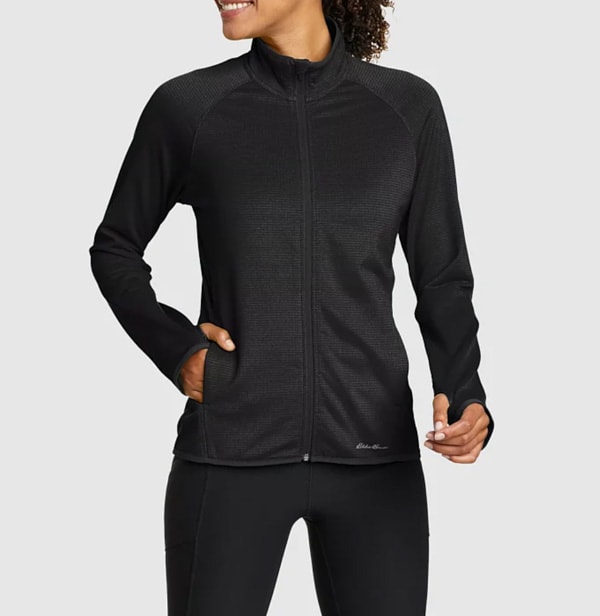
Raincoat / Poncho
We went in May, so this was key. It rained after 2pm every single day. Most of the time, we reached our teahouse but there were two days that we walked in the rain, so a raincoat is a must.
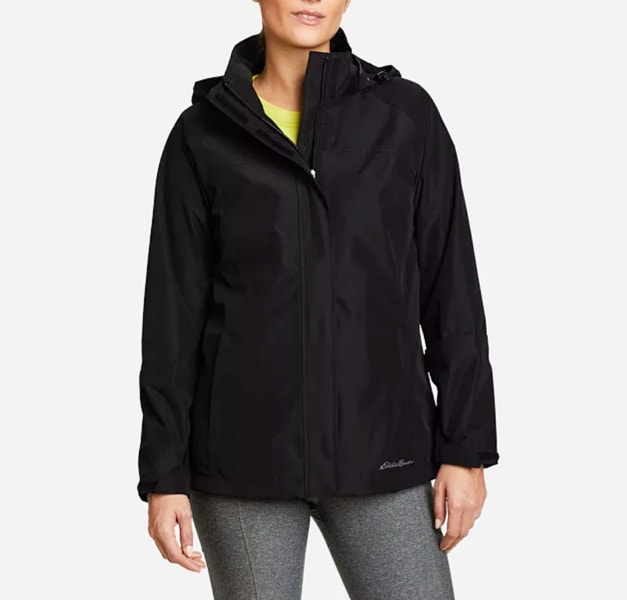
Quick Dry T-Shirts (2)
I rotate between two shirts while trekking. Quick dry is important because when you stop moving you get cold and don’t want your back to be wet with sweat. It also makes it easier to dry it when you do laundry.
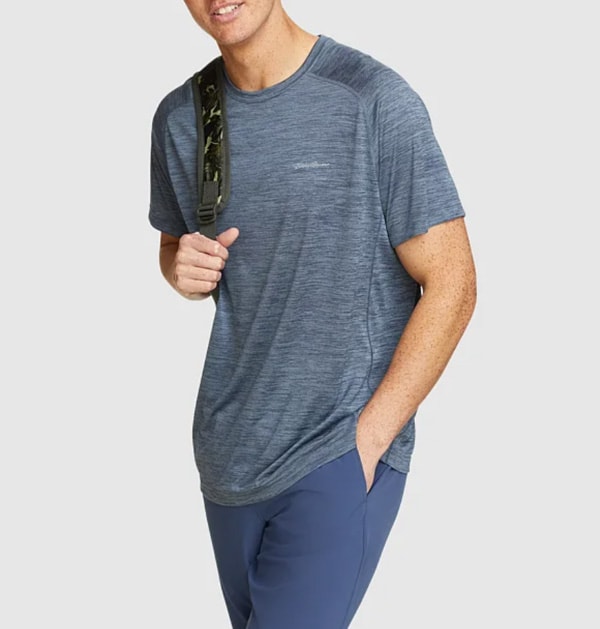
Quick Dry Long Sleeve Shirt
I sleep in this at higher altitudes and it’s great for the day you walk up to Tsho Rolpa Lake.
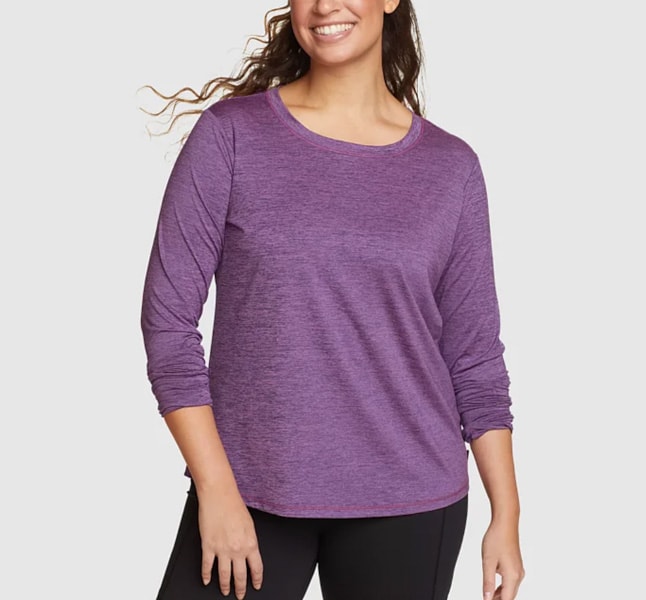
Lightweight Trekking Pants (2)
I prefer full length pants as long as they are lightweight. This trail does go through the jungle which means leeches. Long pants make it harder for them to get on your ankles.
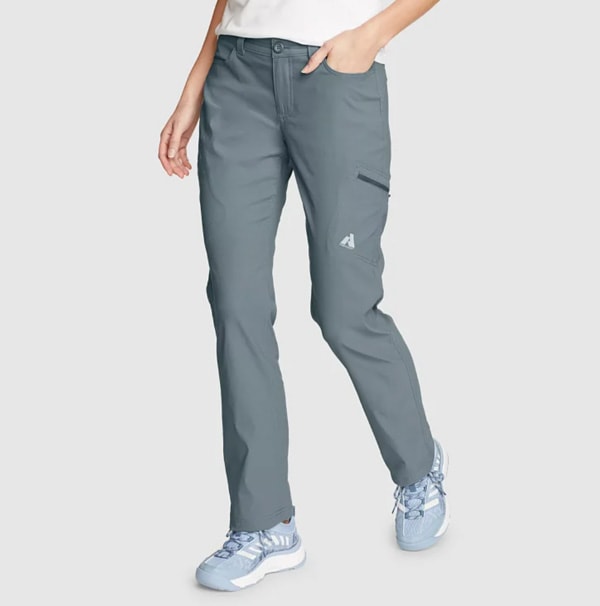
Thermals
Only necessary in the winter (Oct, Nov, Dec, Jan, Feb)
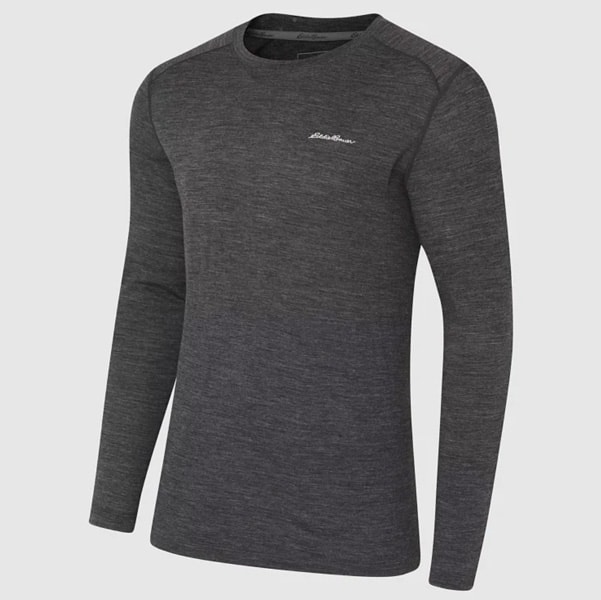
Buff / Scarf
Buffs make it easier to breathe in the cold and take up less room than a scarf.
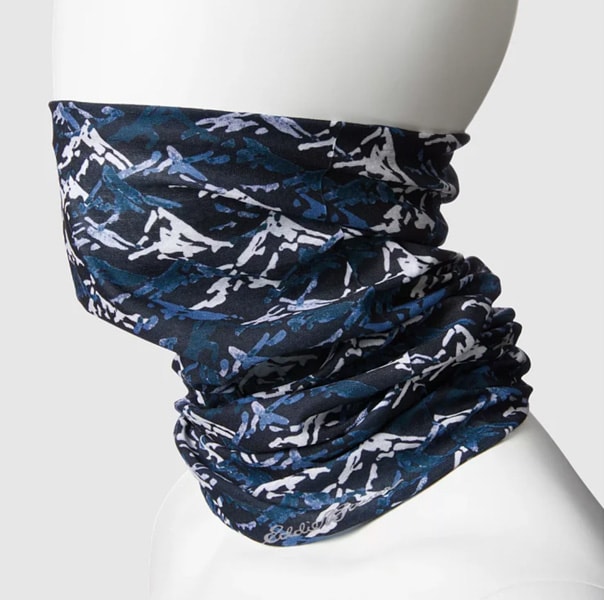
Short Hiking Socks (2)
I used short hiking socks most days. Just make sure they come over your ankle to avoid blisters.

Long Hiking Socks
I only used long socks at night when we stayed in Beding and Na. In the winter, you may need them more often.
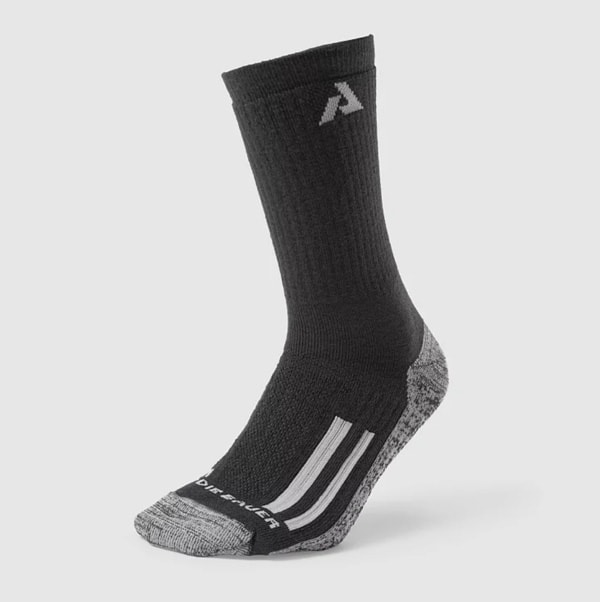
Hiking Boots
Comfortable shoes are a must. These boots are my favorite. They have great ankle support and keep me from slipping. They’re super comfortable. Any hiking boots you get should be treated with Nikwax once a year to ensure they are waterproofed. These shoes have already been with me on several high altitude treks and they are holding up great!
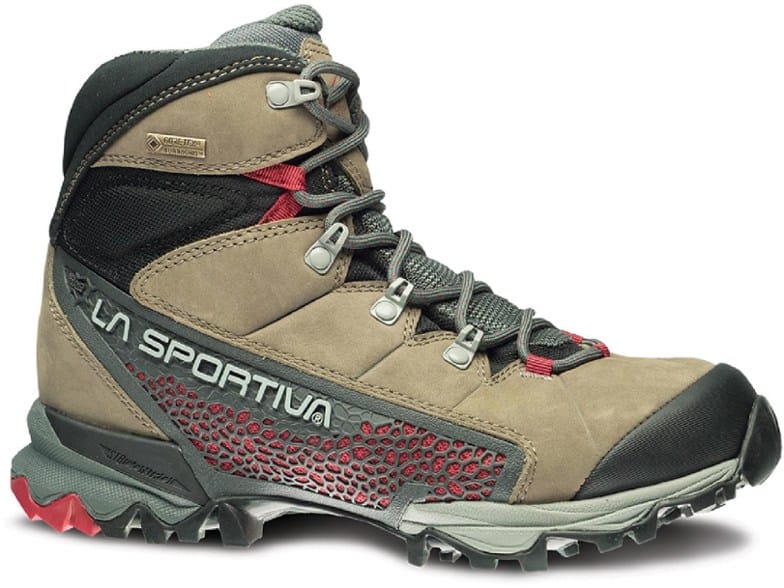
Hiking Sneakers
If you are just starting out with your hiking journey and you’re not ready to spend $200-$300 on boots, then I’d recommend getting a boot/sneaker hybrid. The first two treks I did, I had a hybrid shoe and it was great. It’s also a fantastic option if you’re backpacking and want a shoe that can be for hiking or normal walks through cities. I was recently gifted the NORTIV 8 hiking sneakers and love them. They’re a great affordable option.
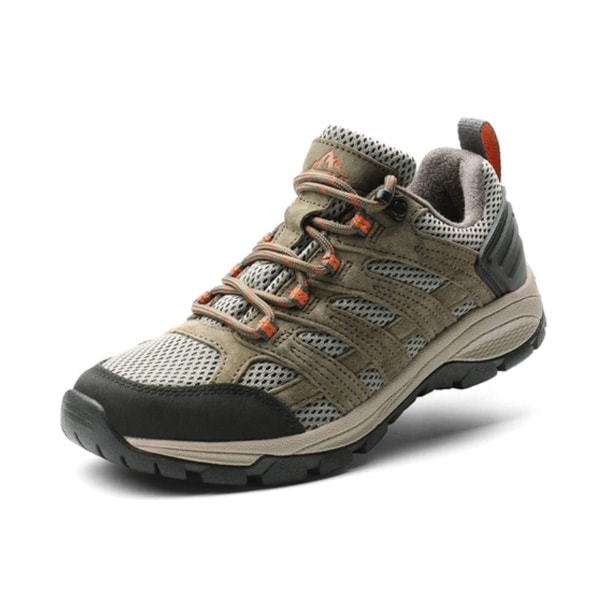
Flip Flops
I like to take my shoes off when I arrive to teahouses so light flip flops are great.
Summer Hat
It’s super important to have a sun hat for the days when you’re in direct sunlight.
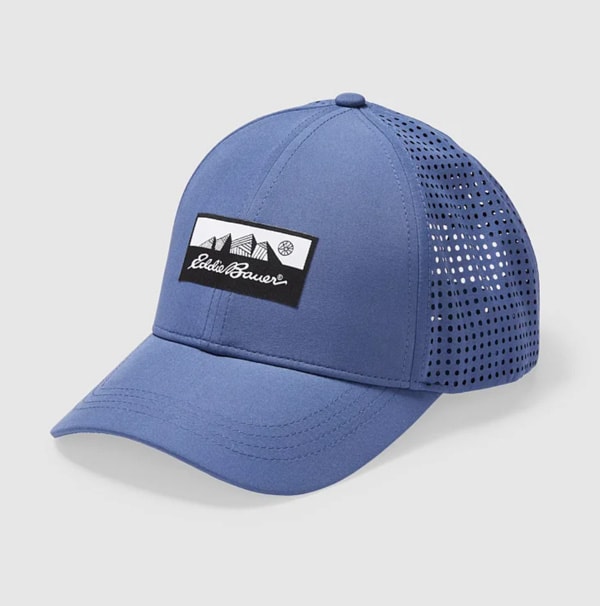
Winter Hat
I used a winter hat in Beding and Na at night and while walking to Tsho Rolpa Lake. In the winter, you may need it more often.
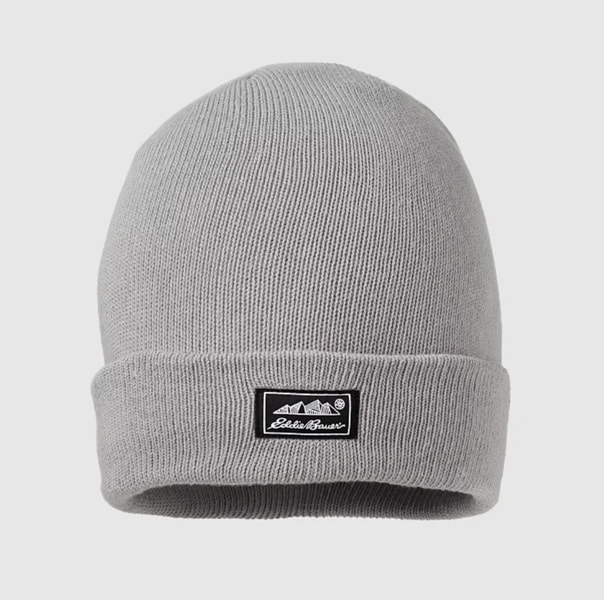
Sunglasses
I recommend polarized ones in case it snows. Snow blindness is a thing.
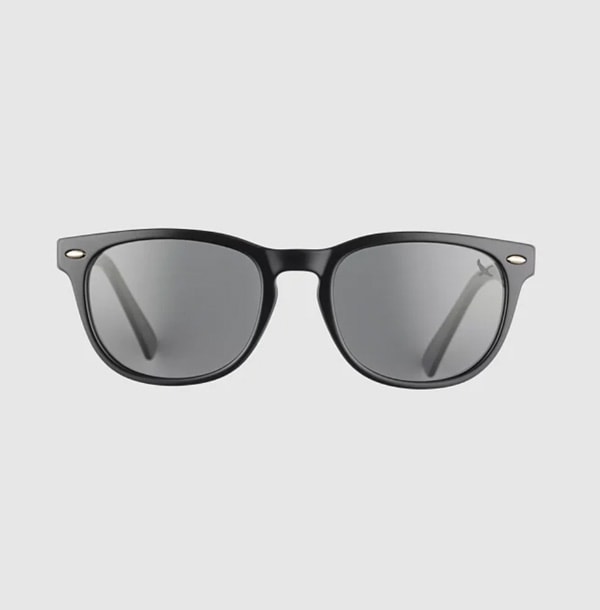
Gloves
Lightweight gloves are important when you’re above Beding. You don’t need heavy ones unless you go in the winter.
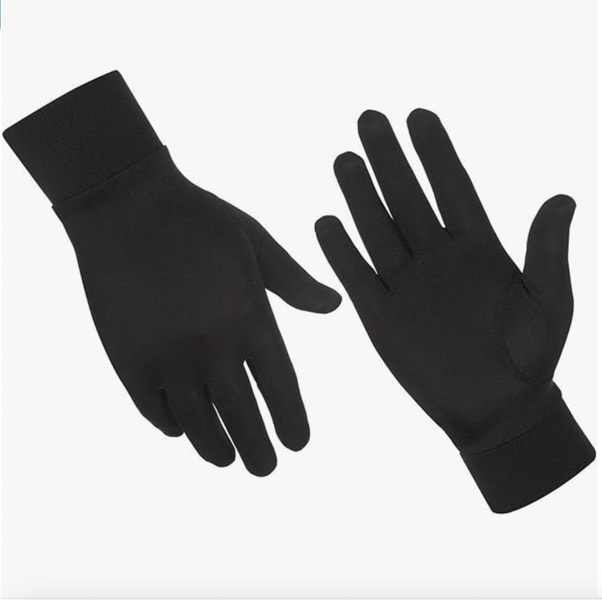
Pajamas
I like a long sleeve oversized cotton shirt and a pair of leggings, but whatever you are comfortable in will work. Long sleeves and long pants are nice because it gets cold at night and the rooms aren’t well insulated.
Underwear (8)
I hate doing laundry when I trek. As a girl, it feels weird to hang your underwear to dry in small villages so I usually bring enough to avoid washing them.
Sports Bras
Two is enough because you can wash one while you wear the other.
Toiletries for Tsho Rolpa Lake Trek
Pro Tip: Think about the weight of every item when you choose it. On my first trek, I packed a full sized toothpaste, a heavy hairbrush, and so many excessive items. Find the lightest and smallest version of everything.
Wet Wipes
I like to have biodegradable wet wipes with me. It’s hard to take showers on this trail, so wet wipe showers are great. You can also use them in lieu of toilet paper.
Quick Dry Towel
For the few times you have access to a shower, a quick dry towel is helpful.
Bug Repellent
I like Badger Bug Balm which is a natural bug repellent. It’s a solid stick, so it won’t spill in your bag and it works very well!
Sun Protection
I recommend an SPF 50 that’s also sweat or waterproof. The sun is strong at altitude.
Tooth Care
Pack a toothbrush, toothpaste, floss or anything else you need. It’s hard to find anything on this trail.
Hand Sanitizer
Many places don’t have a proper spot to wash your hands so this is very important.
Deodorant
It’s hard to find western brands in Nepal and it’s unlikely you’ll find any on the trail.
Vaseline
We always carry a tiny vaseline with us. Trekking has an interesting way of chapping one’s lips and nostrils. On one trek, the combination of the strong sun and freezing cold winds left my nose looking like I had a severe burn for weeks. We apply vaseline multiple times a day to avoid this.
Toilet Paper / Tissues
There’s none in the teahouses so you have to bring your own.
Feminine Hygiene
You won’t find pads or tampons very easily. I recommend bringing your favorite kind from home for comfort. You can buy pads in Kathmandu but the brands are limited.
Hair Care
A lightweight comb and small individual packets of shampoo are enough. There’s not a lot of opportunities to shower along the way.
Laundry Detergent
Bringing a ziplock bag of detergent is good so you can do your laundry.
Hand Cream
You’ll wash your hand in cold water or use a lot of hand sanitizer. I find my hands are always extremely dry when I trek.
Nail Clipper
Pretty self explanatory, but make sure to get the kind with the little thing that cleans under your nails. Without a place to wash your hands properly, you’ll get a lot of dirt under there.
Fabric Softener Sheets
I brought fabric softener sheets from home. I put them in with my clean clothes and laundry to make sure everything stayed smelling fresh over during the trek. They definitely made a difference.
Medication & First Aid
Diarrhea Medicine
70-80% of people visiting Nepal get travelers’ diarrhea so be prepared for the worst.
Activated Charcoal
Activated charcoal is great for treating food poisoning. I always bring about 10 tablets with me. Talk to a doctor before you take this as it is strong enough to cancel out some prescription medications.
Electrolytes
Dehydration is common at altitude, so be sure to have some electrolytes. I like Nuun the best because they taste good. You can buy electrolytes in Nepal, but the taste is kind of gross.
Ankle / Knee Support
I have a bad knee and ankle so I used a brace for the downhill sections. This makes my life exponentially easier and helps manage the pain.
Basic First Aid
Bandaids, Neosporin, Asprin, and other basics are good to have.
Water Purification Tablets
It’s very difficult for villagers to get rid of garbage so please bring a water purifier instead of buying plastic bottles. It’s a lot cheaper to bring tablets than to buy water on the trail.
Vitamins
I bring several immune boosting vitamins with me including Airborne chewables, a gummy probiotic (because they don’t have to be refrigerated like most probiotics), olive leaf, zinc, etc. I also bring a cold medicine and pain killer like Tylenol just in case.
Antibiotics
Get a good antibiotic before leaving. This is just in case you get sick along the way.
Prescription Drugs
There’s no pharmacy on the way so come prepared with what you need.
Cold Medicine
The common cold can hit you anywhere. Have a few days’ worth of cold medicine with you. On every single trek I’ve been on, I’ve given at least one person cold medicine.
Tylenol/Advil
I don’t use pain killers, but I always have these in case of an emergency. This is another item that I’ve given to someone else on every single trek I’ve done.
Diamox / Altitude Medicine
I’ve done over 10 treks in Nepal and have only taken Diamox once. If you don’t plan to take Diamox, bring some with you for emergencies. If you are considering taking it, talk to a doctor to make sure it’s right for you. There are side effects and you need to drink a ton of water when taking it.
Throat Lozenges
Throat lozenges are a life saver, especially if it’s cold when you go trekking. Teahouse walls are super thin, so waking up and coughing means you wake up the whole teahouse. They’re also great during the day if the air gets cold. These are more important in colder high altitude areas, but are also handy if you get sick and have a sore throat.
Electronics
Camera & Charger
I usually recommend a GoPro for trekking, but a lot of this trek takes place at a low altitude and I find the GoPro doesn’t take great photos of the jungle. I took my Canon EOS M3 which is lightweight for a camera. I wish I had a better zoom though, so you may want to bring a DSLR. Whatever you choose, have spare batteries that are charged because there’s limited electricity on this trek.
Phone & Charger
There are spots where you can get service on the way.
Travel Adapter
There are a few places to charge things so have a power adapter with you.
SIM Card
NTC gets service in about 3 of the villages on the way. Ncell does not get service on this trail. You can read my blog about SIM cards for more info.
Maps.me Downloaded
Maps.me is a free phone app that has all the trekking trails on it. This is great as a backup if you get lost. Make sure to download it before starting the trek as you need a good wifi signal to download the map.
Head Lamp
There’s limited electricity so you’ll need a head lamp at night. Especially when you go to the bathroom.
Kindle
I like to read after trekking. Kindles are lightweight, have a long battery life, and have back lighting so you can read in the dark.
Power Bank
On some routes you’ll need to pay to charge a device. It can cost between $1.00 to $3.00 USD per charge and there may be limited outlets available and a queue. It’s best if you have a power bank because you can charge that one time and then use it to charge all your other devices for a few days.
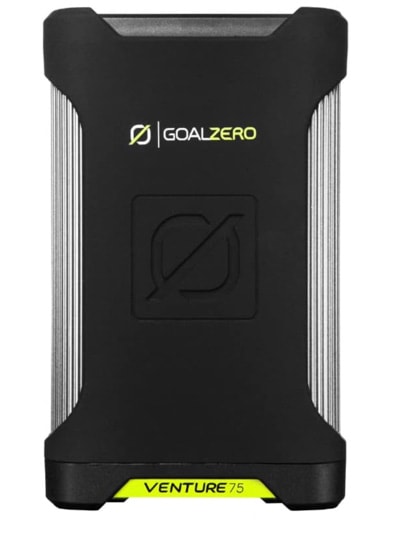
Solar Panel
Electricity is limited so a solar panel is good for those who carry a lot of camera equipment.
Movie / Music Downloads
Some trekkers arrive to the teahouses around 1-3pm each day. Having a few movies on your phone is good. If you like to listen to music as you go, make sure you have some good beats downloaded.
Snacks for Tsho Rolpa Lake Trek
Jerky
This trek is almost entirely vegetarian. If you’re a meat eater, make sure to bring dried meat with you. It’s illegal to kill animals in the area, sell or buy meat. However, you are allowed to bring dried meat.
Fruit Bars
High altitude trekking often has a lack of fruit and veggies so these are important for me.
Protein Bars
Again, it’s a vegetarian trek, so extra protein is good. There’s almost no tea shops in between the villages so power bars are a good snack to keep you fueled.
Trail Mix
Nuts, dried coconut, raisins, etc. are all great snacks.
Chocolate
Sometimes, you just need a little sugar fix. Finding chocolate on the trail is hard.
Other Items to Pack for Tsho Rolpa
Trekking Poles
There are a lot of steps so trekking poles are extremely helpful.
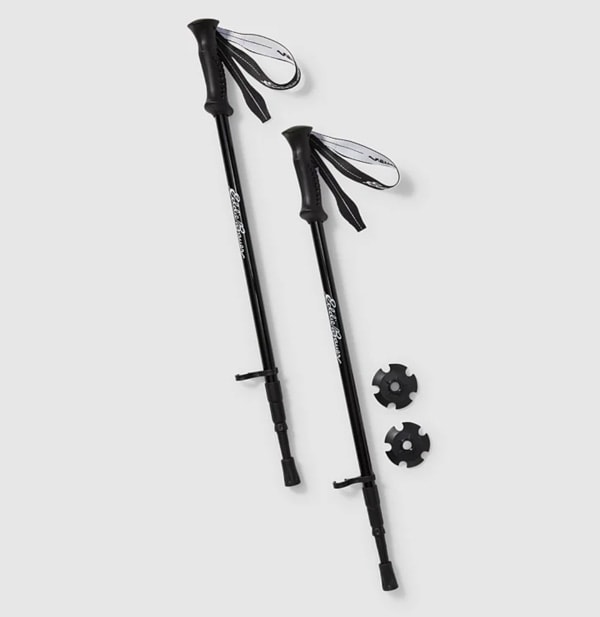
Money
Bring enough money for the trek. There are no ATMs or ways to get money as you go. You can read my post on how much money to bring to Tsho Rolpa.
Entry Permit
The GCAP permit can be bought in the Nepal Tourism Board office in Kathmandu. It’s about $30.
Copy of Passport & Visa
Just in case you need it.
Trekking Insurance
This trek isn’t super difficult, but there are only a few places to sleep. This means that you have to go to the next village even if it’s a big increase in altitude. We both got headaches in Beding. In Na, we had the same problem. We did some acclimation hikes to help and took Diamox in Na to get us through the night. It’s fairly easy to go back down in altitude, but I always recommend people to be safe. There’s no roads past Chhetchhet so getting help in an emergency is very difficult. The only emergency rescue available is by helicopter. Therefore, you can consider getting travel insurance.
Sleeping Bag
I almost never recommend a sleeping bag, however, if you are a germaphobe, you may want to bring your own. Teahouses provide you with sheets and blankets, but they aren’t washed every day and are only washed by hand in cold water. We use the ones the teahouse provides but some people prefer their own.
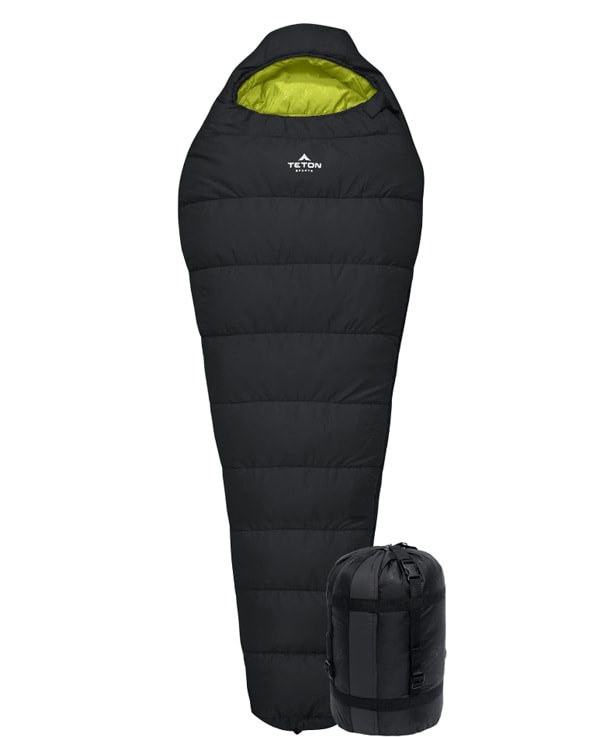
Map of the Area
Purchase a “Rowaling Valley Map” in Kathmandu. You won’t need it for navigation as the trails are very easy to follow, but it’s good to know what village you are going to and the altitude.
Playing Cards
Someone else will always have playing cards, but I recommend bringing a pack just in case. Learn a few games before you leave so you have some options to play when trekking. We had a hilarious time playing “Bullshit” with an entire teahouse. We also had an epic game of UNO going on one trek.
Duct Tape
This seems like a weird thing to recommend, but you never know when you’ll need it. Bring a small roll just in case. I once used it to keep a shoe from falling apart while walking back 5 hours after it busted open (a lesson in buying good quality shoes).
Download My Tsho Rolpa Trek Guidebook!
Shopping in Nepal
Planning to shop when you arrive? On my first trip to Nepal, I was backpacking for 9 months in Southeast and South Asia. I didn’t have room in my pack to carry a bunch of heavy winter clothes with me, so I ended up buying everything in Thamel (the tourist hub in Kathmandu). I arrived a few days early, so I had plenty of time to search for things. I learned quickly that I’d need to check multiple stores and negotiate a lot.
Recently, I was approached by Mount Ready to try out their new system. They make the experience a lot easier. You simply go to their website, pick your trek and they have a pre-arranged pack with everything in it. It’s the same stuff you buy in Thamel (including knock offs) but you don’t have to spend days running around and negotiating. The prices are fair and you can add or remove stuff from the pack. You show up at the store, and everything is picked out for you. All you have to do is try it on and pick the colors you like. It’s super simple.
Before recommending them, I wanted to test it out myself, so I had them put together a pack for the Annapurna Circuit. I removed a few things, changed some sizes and styles and checked the quality of the clothes. If you’re doing a trek once and don’t want to invest a lot of money, then this is the way to go. I started out with a lot of items from Thamel and slowly upgraded my pack with the Eddie Bauer products listed above.
You might also like…
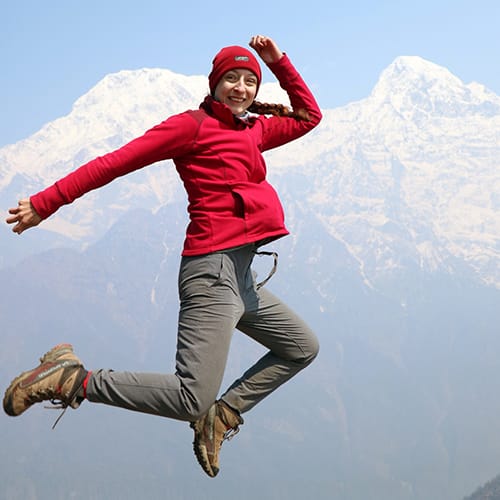
Michelle Della Giovanna
Writer at Full Time Explorer
I’m just your average New Yorker who quit her job in the fashion industry to explore the world. Come find out what it’s like to trade in five-inch heels for squat toilets.


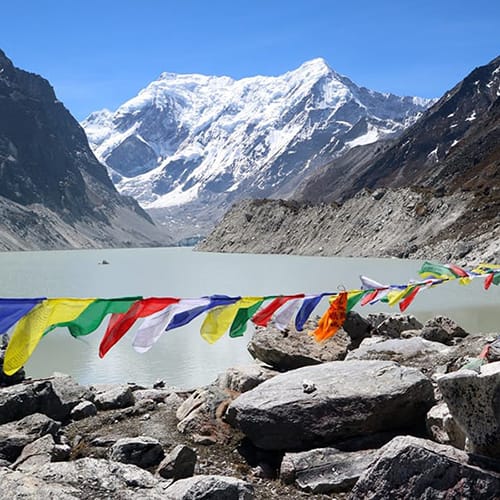
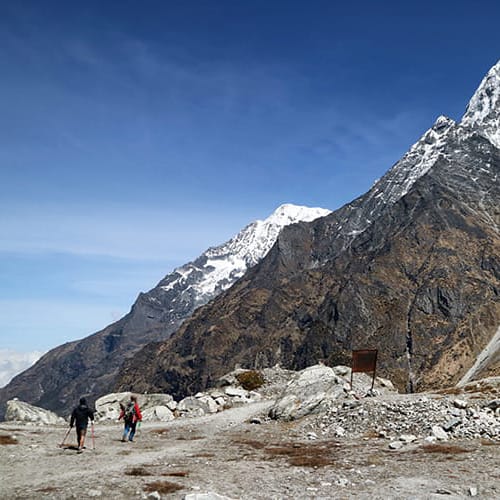
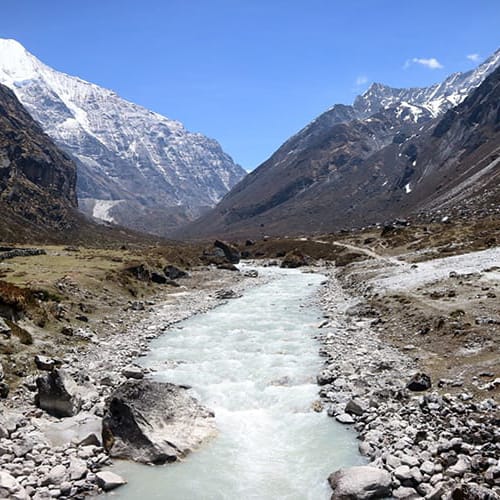
Hi 🙂
How as the leech scene during the trek?
I am going on 5th oct 2019 and its still raining.
thank you
sam
Hey Sam! We went in May during rain and no leeches. The trail is really well cared for so there’s no long grass to walk through. If you go off the trail maybe there would be more.
I just remembered, I got one leech bite on the way back just before we arrived in Simigaun. Still not bad though since I’ve done day hikes where everyone got 3 bites haha!